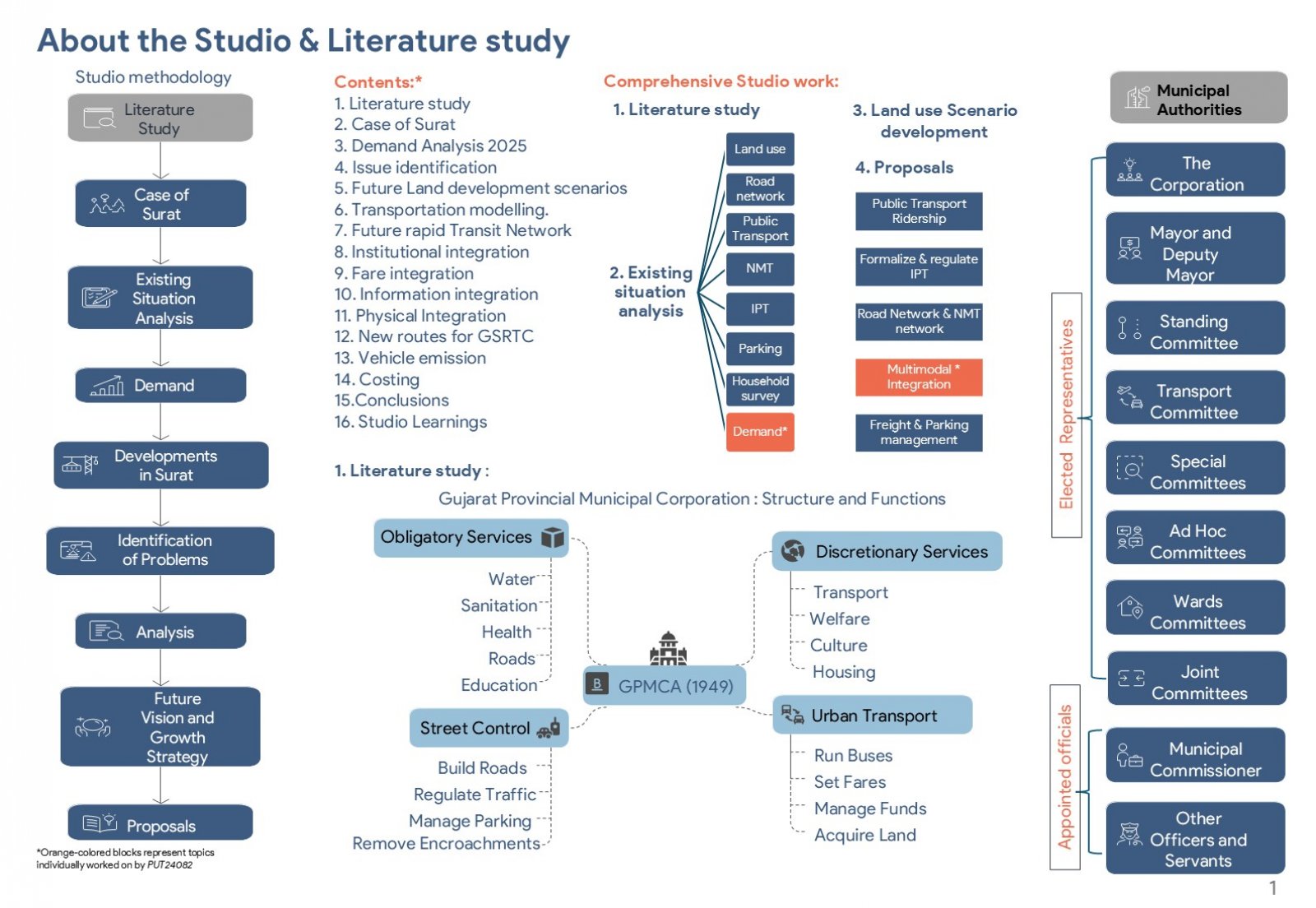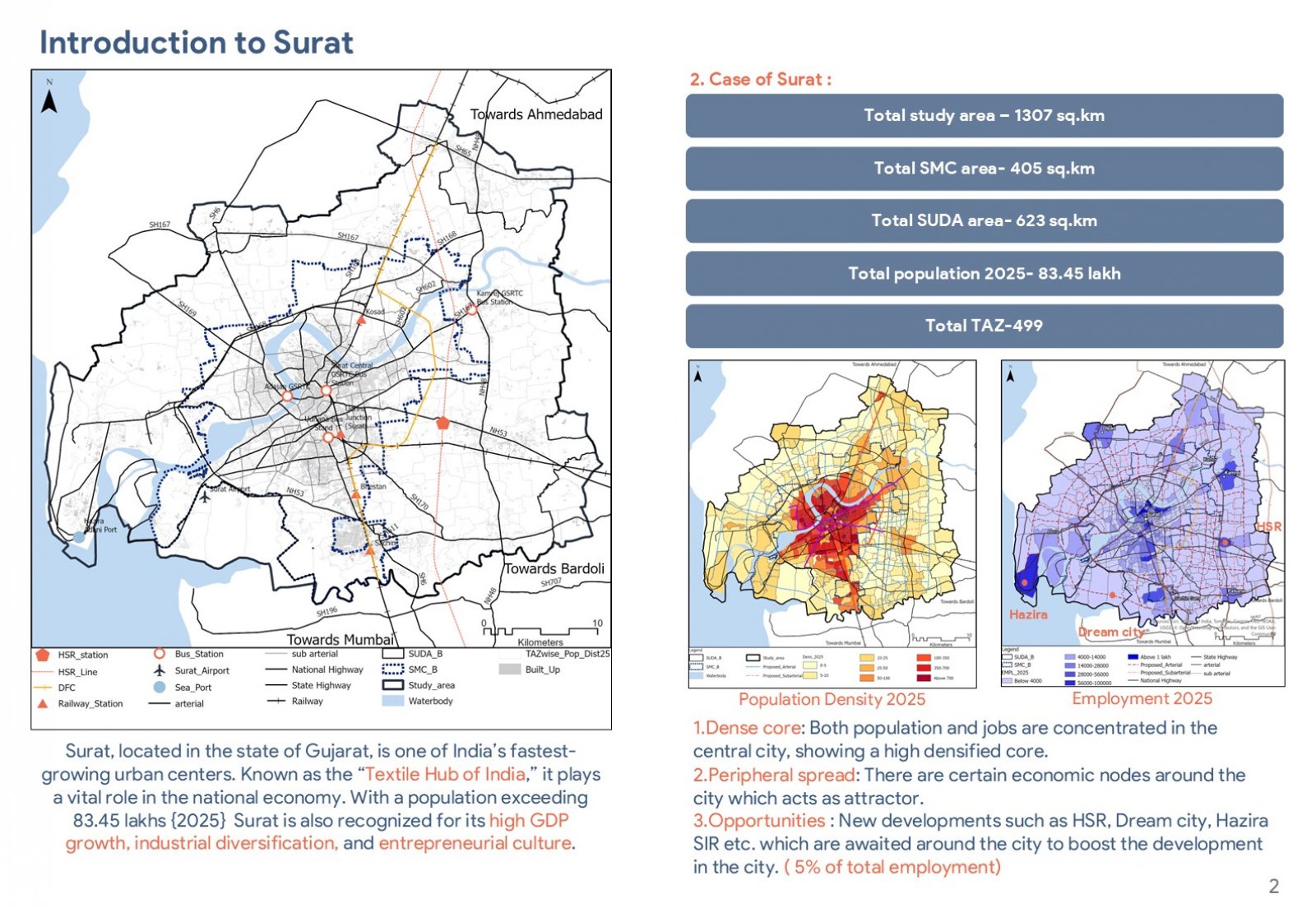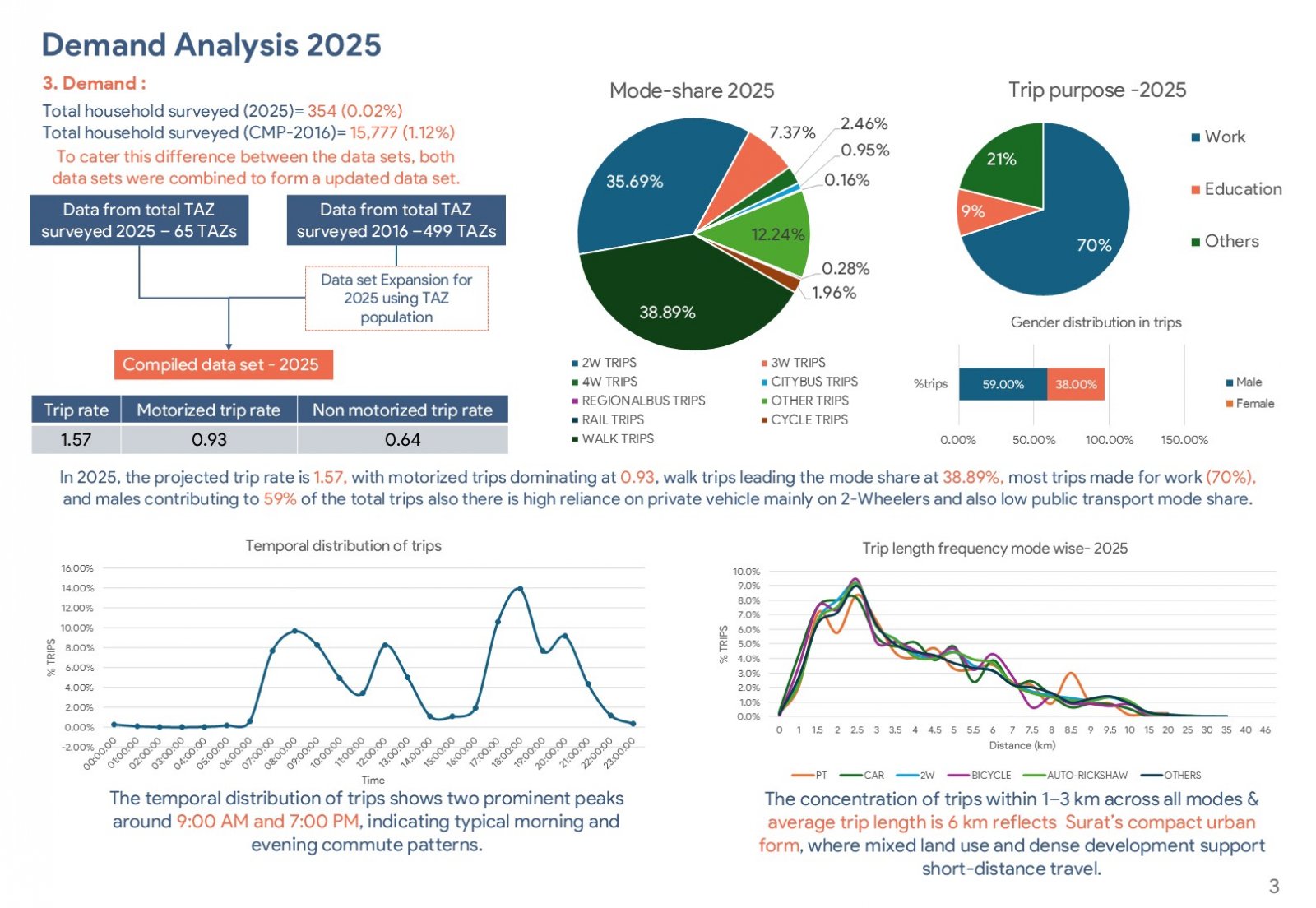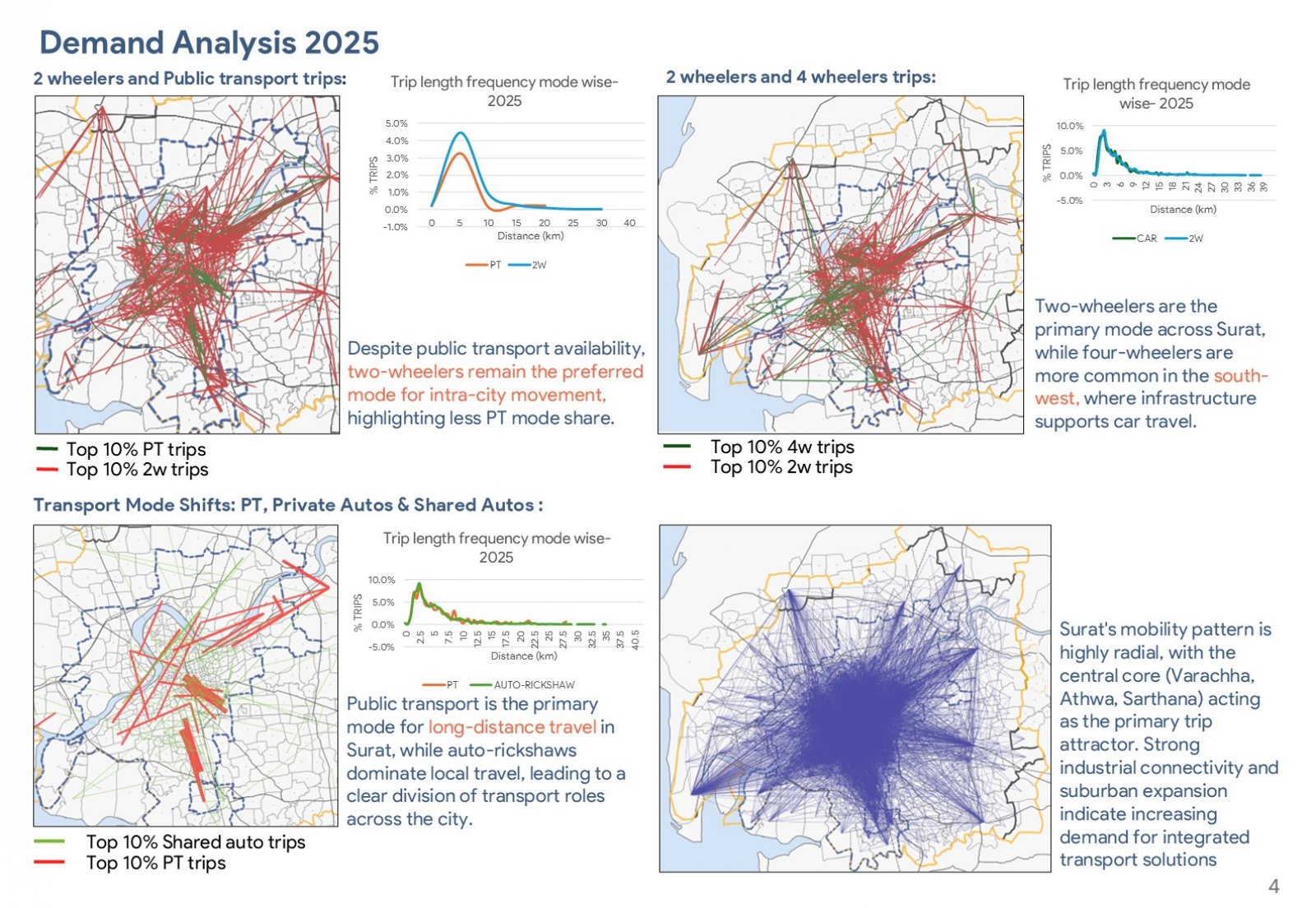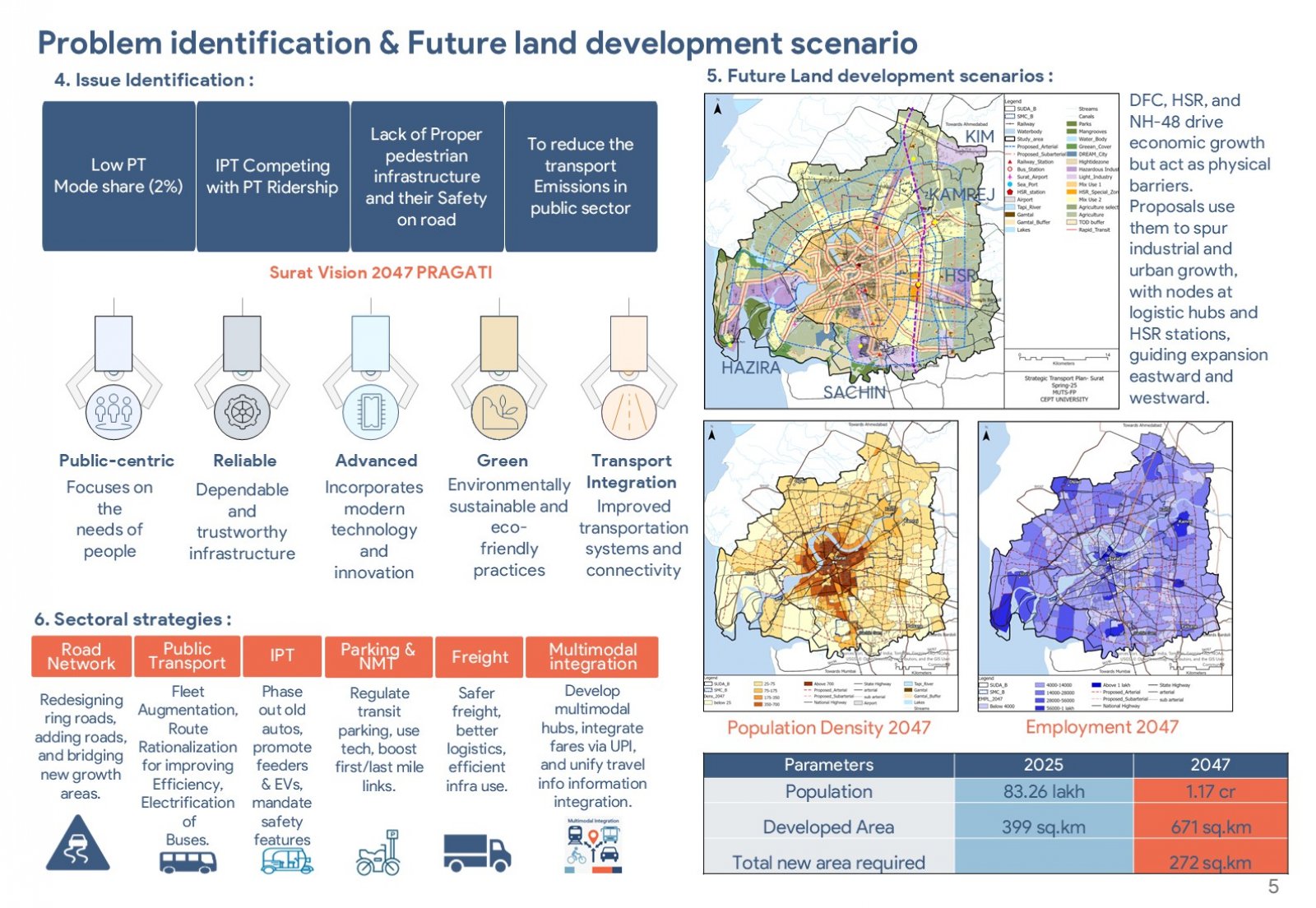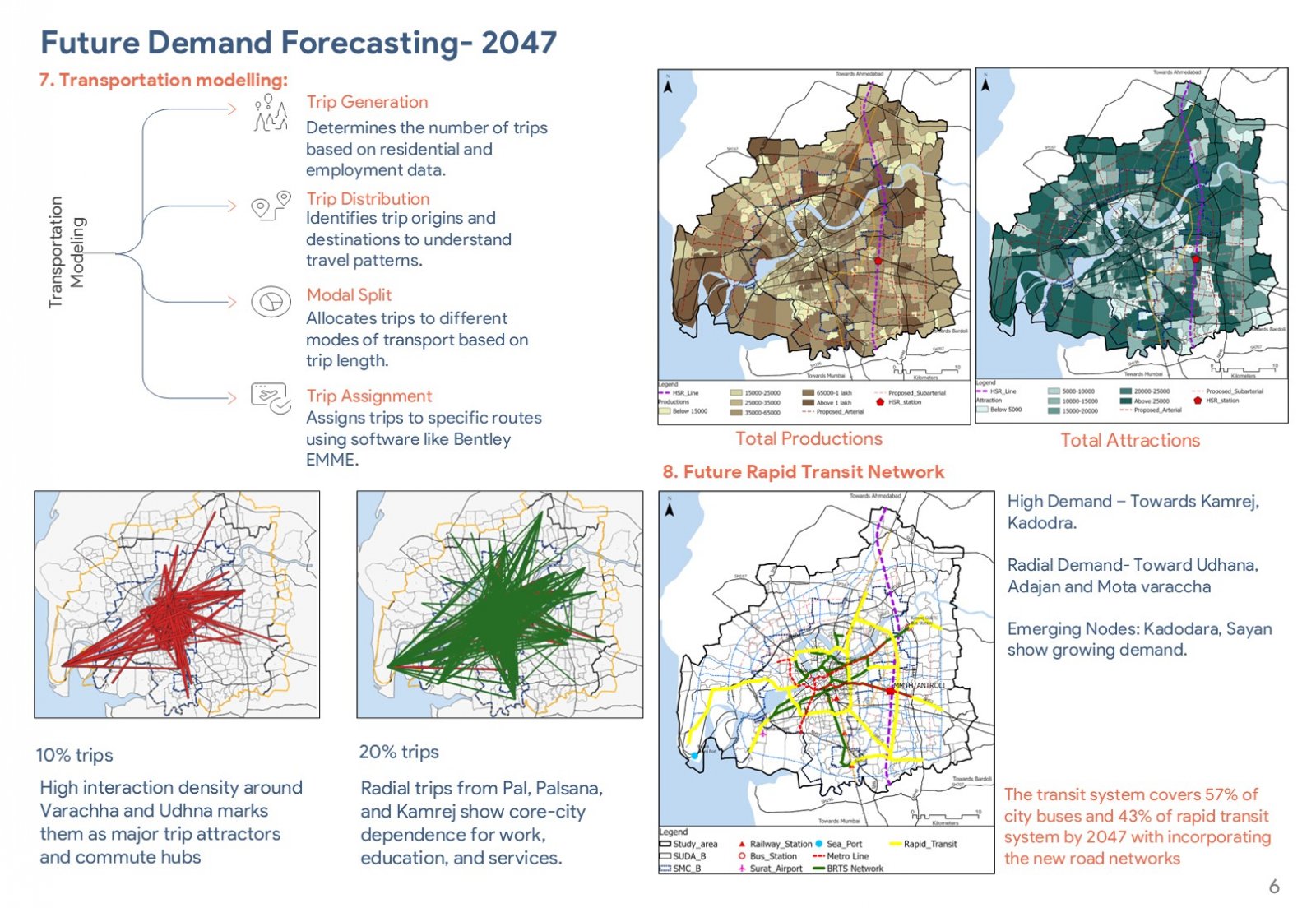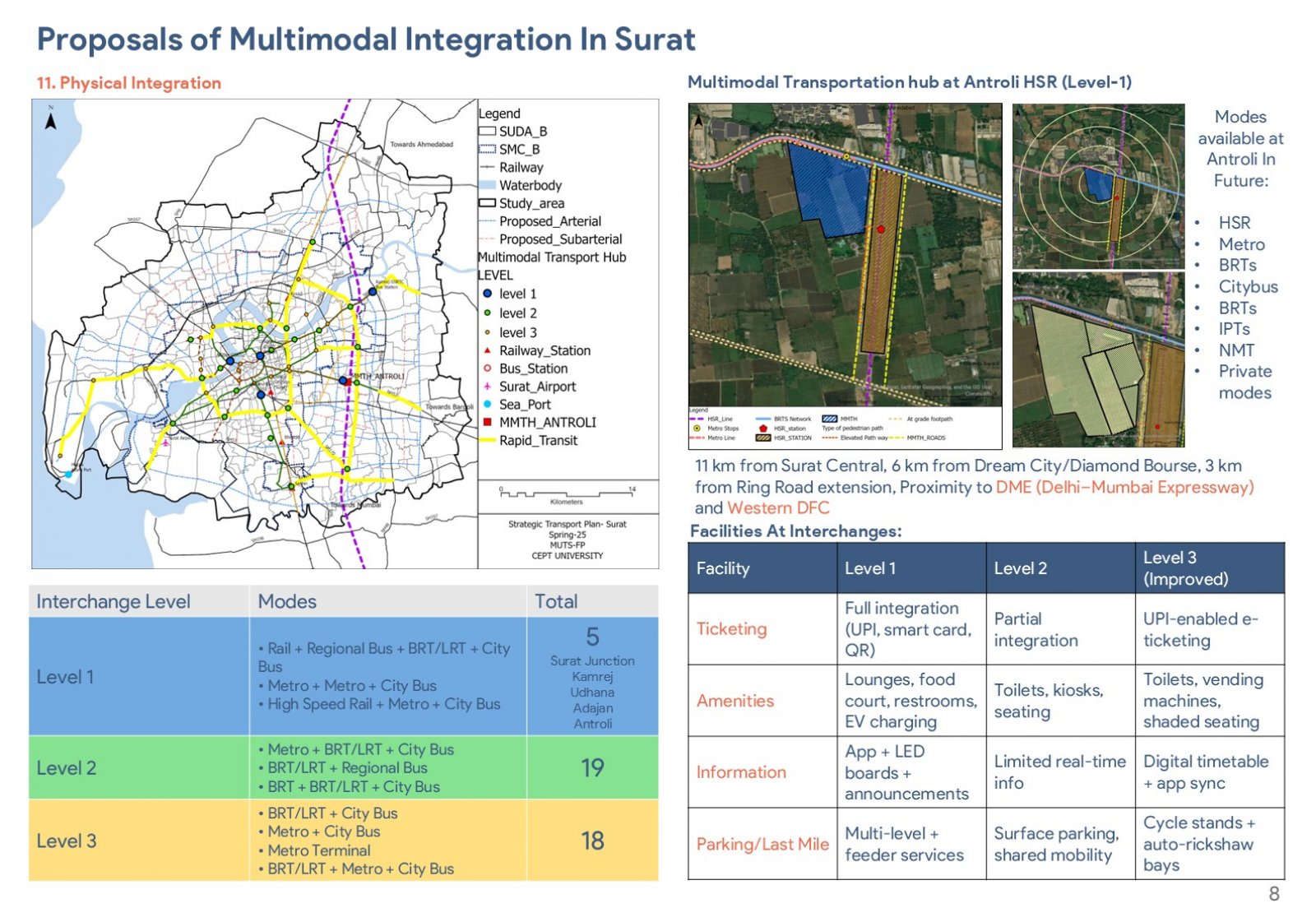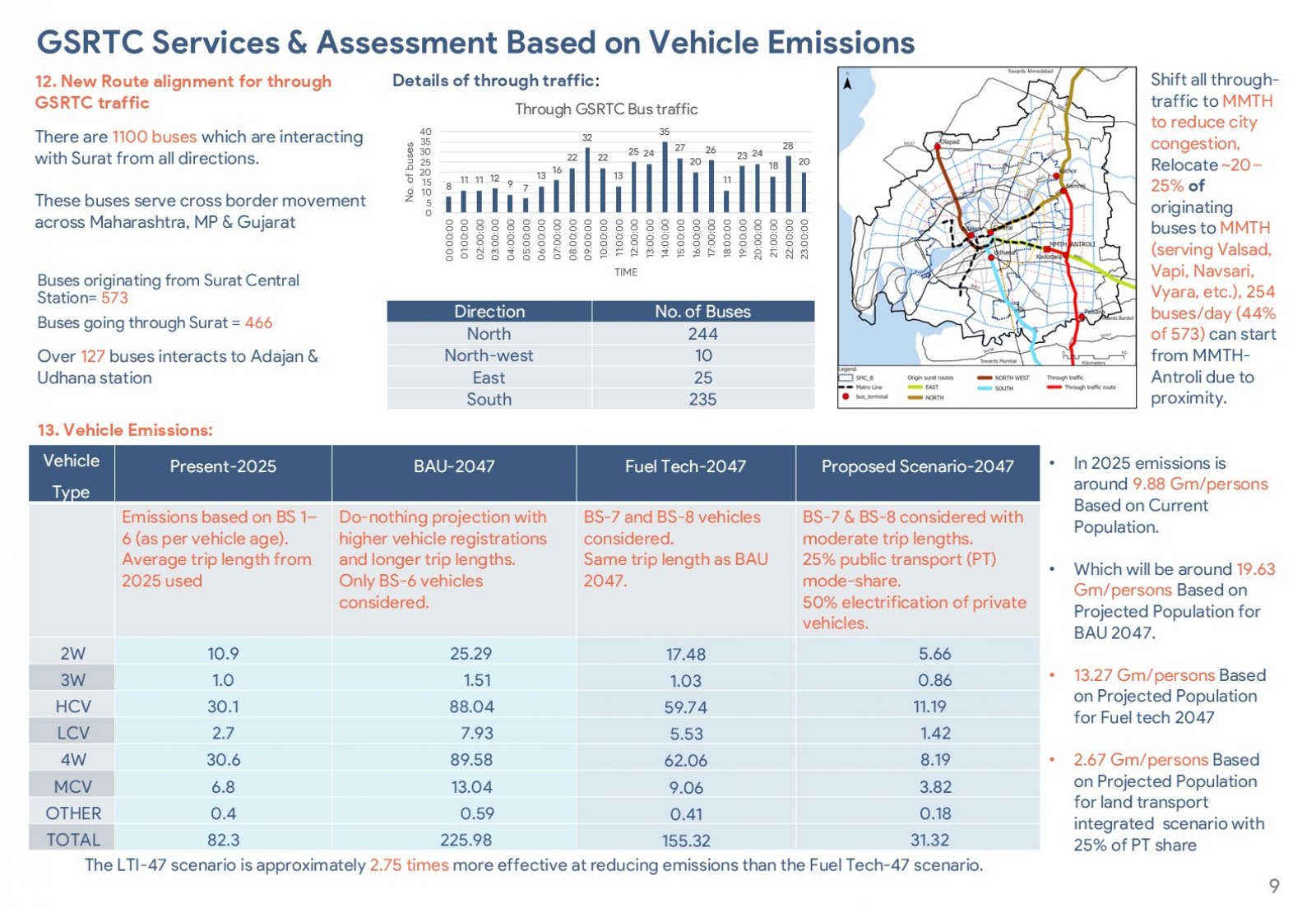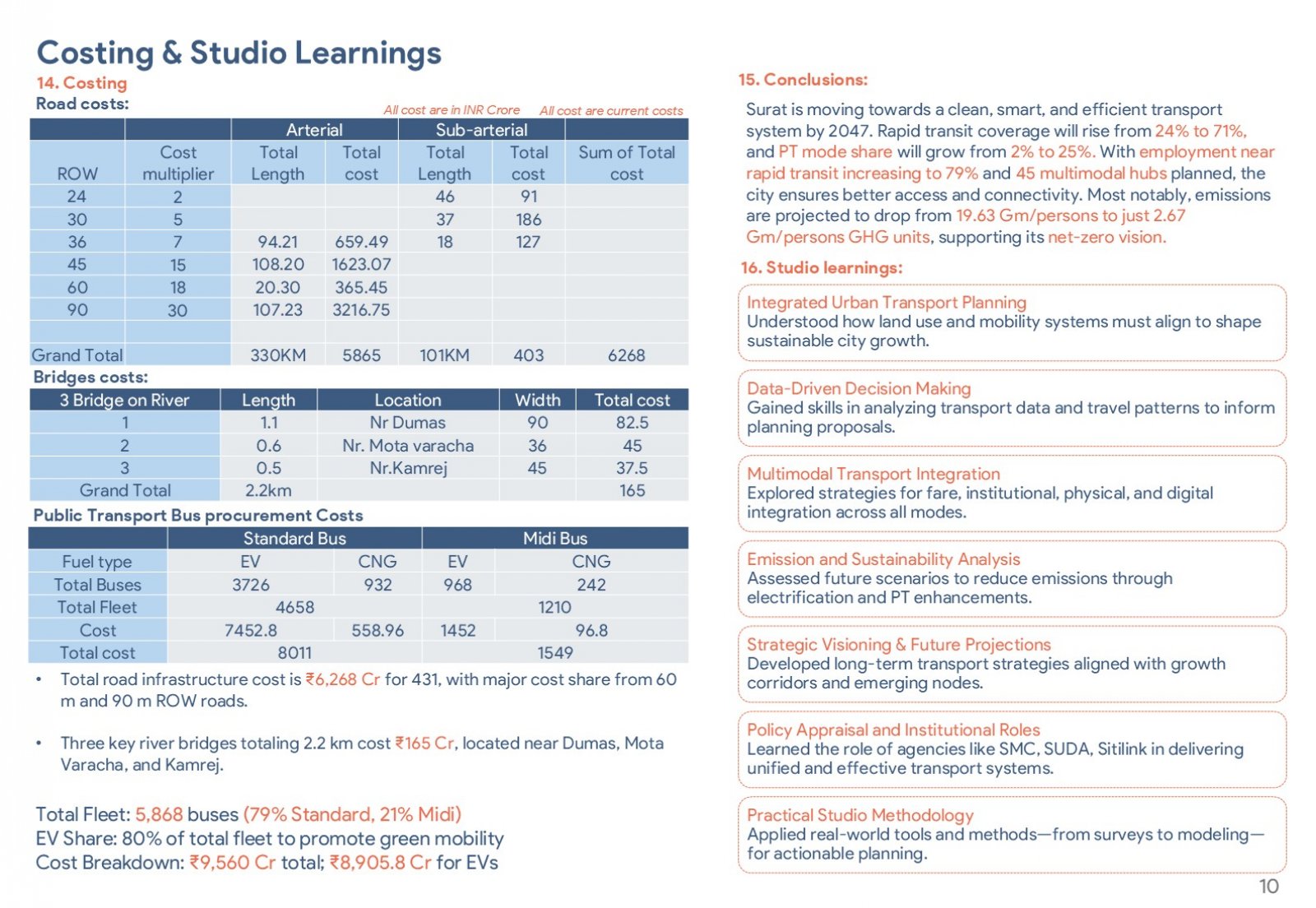Your browser is out-of-date!
For a richer surfing experience on our website, please update your browser. Update my browser now!
For a richer surfing experience on our website, please update your browser. Update my browser now!
The Strategic Transportation Plan for Surat 2047 envisions a clean, efficient, and integrated urban mobility system. Anchored in demand analysis, land-use planning, and modeling, the plan proposes expanding rapid transit coverage from 24% to 71% and increasing public transport mode share to 25%. Key interventions include fare and institutional integration under SMTA, multimodal hubs, EV-based fleet expansion, and physical improvements across corridors. Emissions are projected to drop significantly under the LTI-47 scenario, supporting Surat’s net-zero ambition. The strategy aligns infrastructure, governance, and innovation to sustainably serve a growing population while enhancing accessibility, equity, and environmental resilience.
